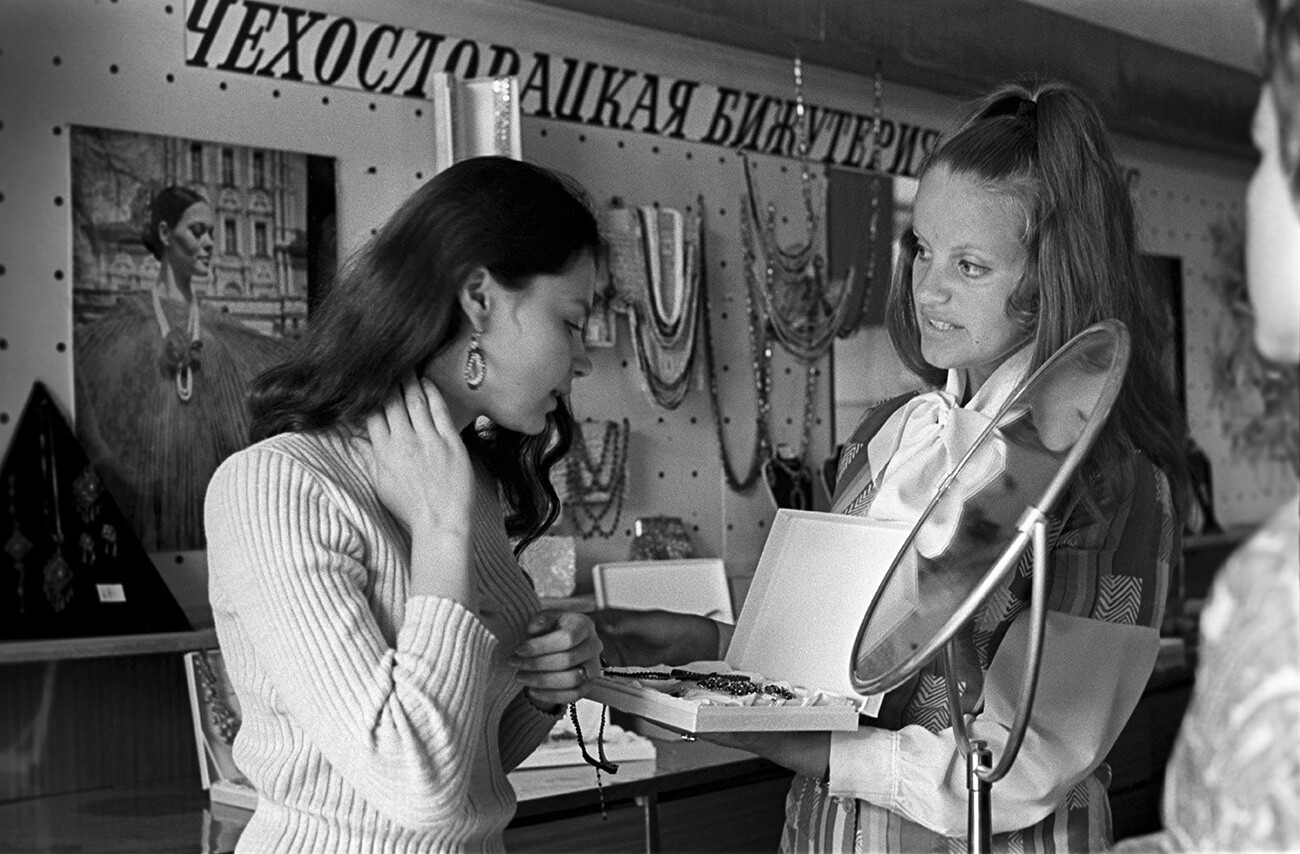What foreign goods could be bought in the USSR (PHOTOS)


Foreign goods got to the Soviet Union in different ways. For example, the Council for Mutual Economic Assistance supplied products from socialist countries.

In the 1960s, there were even specialized stores: ‘Leipzig’, where they sold goods from East Germany, ‘Balaton’ with goods from Hungary and ‘Wanda’ with Polish goods.

In addition, there were the so-called ‘Berezka’ stores. There, for hard currency and special checks from state organizations (Vneshposyltorg and Vneshtorgabank), they sold imported food, equipment and clothes.

But, shopping there was only available to foreign tourists, Soviet diplomats and selected government officials. There was also underground trade, when goods from abroad were bought from black marketers (‘fartsovschiki’).
Shoes and clothing

Soviet citizens first saw jeans in 1957, during the Festival of Youth and Students. “They passionately wore multi-colored nylon gloves… they showed off Czech or Hungarian knee-length raincoats, tied their ties in microscopic knots, flaunted their plaid cowboy shirts of an unprecedented new-fashioned cut… and blue pants “seams outside”, as angry old ladies used to say – the first blue jeans,” recalled art historian Michael German of the fashion of the time in his book ‘The Complex Past’.
For jeans sold by ‘fartsovschiki’ (who bought them from foreign tourists), fashionistas were ready to pay 200-300 rubles, more than their monthly salary, which averaged at 120-150 rubles in the country.

Foreign footwear was supplied to the Soviet Union, in addition to Czechoslovakia, from Romania, Yugoslavia, East Germany and Hungary. Art historian Irene Andreeva complained in her book of memoirs ‘Private Life under Socialism’ that Yugoslav winter boots with fur on fashionable rubber soles in the 1950s were obscenely expensive – two of her monthly salaries. And, in the 1970s, women dreamed of boots “on semolina” – this is what the porous thick sole was called because of its resemblance to porridge. To buy ‘Salamander’ boots in this model, one had to stand in line and be ready to pay about 80 rubles, an unheard-of amount of money at the time.
Young people preferred sports shoes to model shoes. For example, democratic sneakers (‘kedy’) – their popularity grew after the same festival. They cost a little more than 1 ruble and were sold in any sports store. In the 1960s, the ‘Two balls’ sneakers appeared on shelves – these Soviet “Converse” shoes were produced in China and cost around 4 rubles. Of course, they did not have such a variety of colors as modern ones, but they were almost timeless. They were also fashionable – they were worn by Yuri Gagarin himself.
After the 1980 Summer Olympic Games in Moscow, sneakers were at the peak of fashion. ‘Adidas’ sneakers began to be produced in the Soviet Union under license, while Czechoslovak ‘Botas’ and ‘Cebo’ and German ‘Romika’, produced in Bulgaria, were also imported.
Furniture

There was no IKEA in the Soviet Union, but there was Hungarian, Polish, Yugoslavian, Romanian and East German furniture. Cabinets with shiny lacquer coating, secretaries and bars – for example, in 1950-1960s, the ‘Helga’ furniture wall made in East Germany was considered to be on top of everyone’s wish list. Later, the USSR established its production under license.

In Viktor Rozov's play ‘In Search of Joy’, the heroine rejoices like a child, when she buys a Czech sideboard: “You're my handsome, my beauty! Oh, what I endured because of it! The audience – just terrible! They're tearing, pushing, shouting! I took him to the fight, so I took him to the fight! Can you imagine: the sideboards are running out and someone in a hat – a nasty face! – and then she gets in front of me! Eh? Well, I showed her! I put her in her place!”
Foreign furniture was spacious and modern and its presence in a home showed guests that people with means lived there. For example, a set of Yugoslavian or Romanian furniture for a living room could cost as much as 1,000 rubles.
Carpets & crystal

The obligatory accessory of Soviet apartments – a carpet on the wall – was not necessarily Soviet-made. Lucky people bought tapestries with fringe made in East Germany. They differed from Turkmen or Azerbaijani ones primarily in patterns and a wide choice of colors.
Soviet housewives, meanwhile, really appreciated Bohemian glass: crystal vases and glasses were saved and put out on the table only on holidays. A special snobbish trick was to leave the label on the glasses and vases, confirming the brand and origin. Bohemian glass was, at the time, one of the most expensive gifts.
Perfumes & cosmetics

“There is French perfume, the one you wanted.” This phrase would turn the head of every Soviet woman. Buying foreign perfume in the USSR was possible. However, unlike the Soviet ‘Red Poppy’ or ‘Silver Lily of the Valley’, the prices were astronomically high.

For example, a bottle of Chanel ‘No. 5’, Lancome ‘Climat’ or ‘Magie Noir’ cost about 25-50 rubles, ‘Fidji’ by Guy Laroche, meanwhile, could be found for 25 rubles.
Decorative perfumes also appeared in stores – and not only in the capital. And if face and body care creams were still deemed exotic, then mascara, powder and blush by Lancôme, Dior or Elizabeth Arden could also be found.

